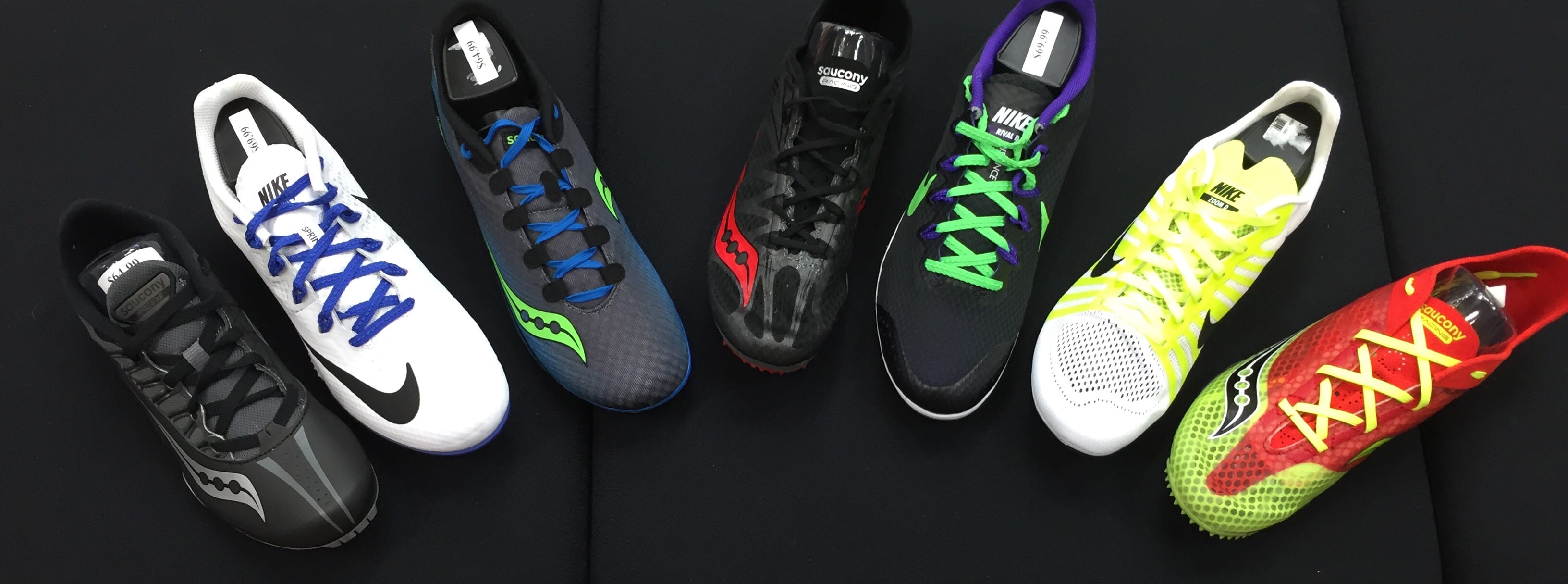

Manufacturers create inlets of the EVA foam in the spike plate to allow some flexibility and torsion-a necessity for the proper toe-off in each stride. After all, you're spending more time running your event, so you need to be a little comfier. Unlike sprint spikes, mid-distance performance shoes have a very thin layer of ultralight EVA foam to provide a small dose of cushioning. You may also observe that the shoe looks a tad softer underneath the arch. You may notice that the forefoot is not completely covered in plastic. Compare it to the plates you see on both sprint varieties. Take a look at the middle distance spike plate. They will be less rigid than sprint spikes, so they should feel less stiff.

Do not wrench them too tight as you may risk stripping the spike wrench.įor the runner who has found his or her home in the 800m or 1500m/1600m/Mile (herein referred to as "the mile"), shoe companies have built spikes with both your leg speed and endurance in mind.įor those running a multi-lap race and making at least two turns (yes, I'm directing this to the half-milers and milers that have a spot on the 4x400m relay) middle-distance spikes will have an appropriate blend of flexibility, torsion (ability to turn and flex), and rigidity. Wrench the spikes in securely lest they fall out mid-race. Since flexibility is a greater concern for longer sprints, spikes for these athletes will only have 6-8 pins. Traditionally, short sprint spike plates will have about 7-10 pins per shoe to foster greater traction. As a rule of thumb: The shorter the event, the more spikes you'll need. Now let's talk about actually wrenching the spikes in. Some models may even employ a strap above the shoe tongue or a zipped upper. Sprint spikes grip the foot firmly to lock it in place to encourage better running economy. The upper in any spike is, generally, more narrow than what athletes are accustomed to in running shoes. The upper of the shoe is designed with sprinters' needs in mind as well. The overall fit feels more comfortable and natural when running on a rubber track surface. The outsole is largely made of plastic, so it will feel firm and rigid upon first wear. Sprint models with 200m-500m runners in mind usually do not contain a plate that covers the heel and are more flexible.īoth short and long sprint models employ a firmer spike plate beneath the forefoot to yield a "recoil" effect, so that with every step, the shoe is responsive enough to give you some more "spring" in your stride. These best serve runners who compete in events that have one or no turns-the shoe is designed for sprinting down straightaways and are relatively stiff. Spikes designed for sprinters of the linear variety-55m or 100m dashers-have a full-length plate-one that spans from the forefoot to the heel. They often sport an aggressive plastic mold underneath the forefoot to force runners on their toes and to decrease foot contact with the ground-exactly what speed demons need to shave valuable fractions of a second. You can quickly detect a sprint spike by observing the plate on the outsole.

Sprint spikes are designed to enhance your form and speed from the starting blocks to the finish line. For sprinters, forward propulsion, minimizing the time spent on your feet, and your drive phase is of vital importance.


 0 kommentar(er)
0 kommentar(er)
